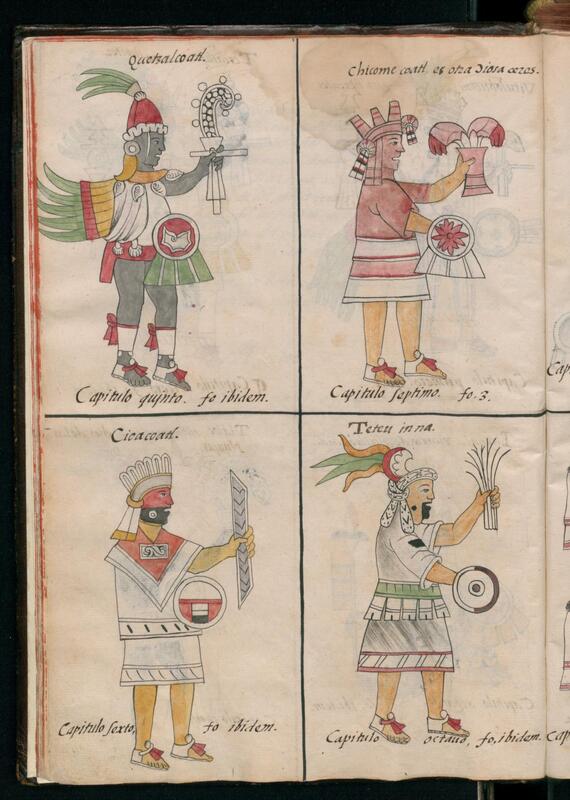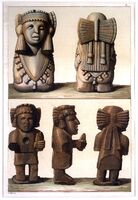Cihuacóatl
The Aztec empire followed a polytheistic religion where sacrifices and offerings were made to the different deities in order to appease them. One God being Cihuacóatl who is often referred to Tonantzin which translates to “our mother.” Cihuacóatl was known as the snake woman and was a fertility Goddess often being associated with midwives. She was credited with assisting Quetzalcoatl with the creation of the Mexica by mixing the bones of earlier people with his blood. Mythology tells of her abandoning her son in a crowd of people but after this regularly visiting a crossroads to search for him only to find a sacrificial knife. Although she was a fertility Goddess she was often associated with poverty, abandonment, and suffering. Spanish friar Bernardino de Sahagun (1499- 1590) was one the first to publish a written account of Goddess in The Florentine Codex. The Codex was a detailed enthography of the Aztec Empire prior to colonization. In the Codex she is shown wearing a headdress, red and black face paint, dressed in all white, and holding a sliver object.
Devotions were made to her in the form of several feasts that would happen through-out the year at temples that were dedicated in her honor. One of the most notable of her temples being the one that was erected on top of the hill Tepeyac outside of Tenochtitlan. In addition to showing devotion to the God's through feasts and sacrifices the Aztecs also created art in honor of them. These statues and other art pieces would be placed within temples as physical depictions of the Gods. Although very few of these objects survived colonial times they would have been done in an art style similar to the ones depicted in the drawing. Tonantzin would become the foundational understanding of the Virgin Mary amongst the Mexica due to their religious imagery overlapping.

